Home is a safe haven for everyone. While you think everything in your home is safe and toxin-free, you will be surprised at the amount of chemicals common household products have. You are probably aware of some, like formaldehyde and ammonia. But what about the others? So, here’s a list of toxic things in your home that you need to switch ASAP (Yes, you can totally do without them!) and their non-toxic alternatives.
Skip these toxic things in your kitchen
The kitchen is probably the liveliest room in your house as that’s where all the cooking takes place. Here are a few items in your kitchen that you should skip right away.
1. Plastic items

We all have old takeaway containers, plastic wraps, and other plastic items in the refrigerator and pantry. However, they are one of the most toxic things in your home. The problem with plastic is that when you heat plastic, dangerous chemicals, namely bisphenol-A (BPA) and phthalates, leak into your food.
Both BPA and phthalates, are not good for you as they can cause hormonal imbalance in humans. These chemicals can also result in birth defects by hampering the growth of the brain and reproductive organs in developing fetuses. In addition, the temperature and time for which you heat plastic can also affect the amount of toxins in your food.
According to Gary Ginsberg, the author of What’s Toxic, What’s Not, ‘Hot foods sitting in a container for longer periods of time, will leach more. In general, it is advisable to heat your food in ceramic or Pyrex to avoid the leaching issues you get from plastic trays.’
Non-toxic alternatives
- You can easily skip the plastic wraps and containers by opting for reusable stainless steel or glass containers.
- For plastic wrap alternatives, you can try silicone lids and beeswax wraps. These are great to keep yourself and your children safe.
- You should also check out – Plastic-free ways to store food in the kitchen.
2. Non-stick cookware
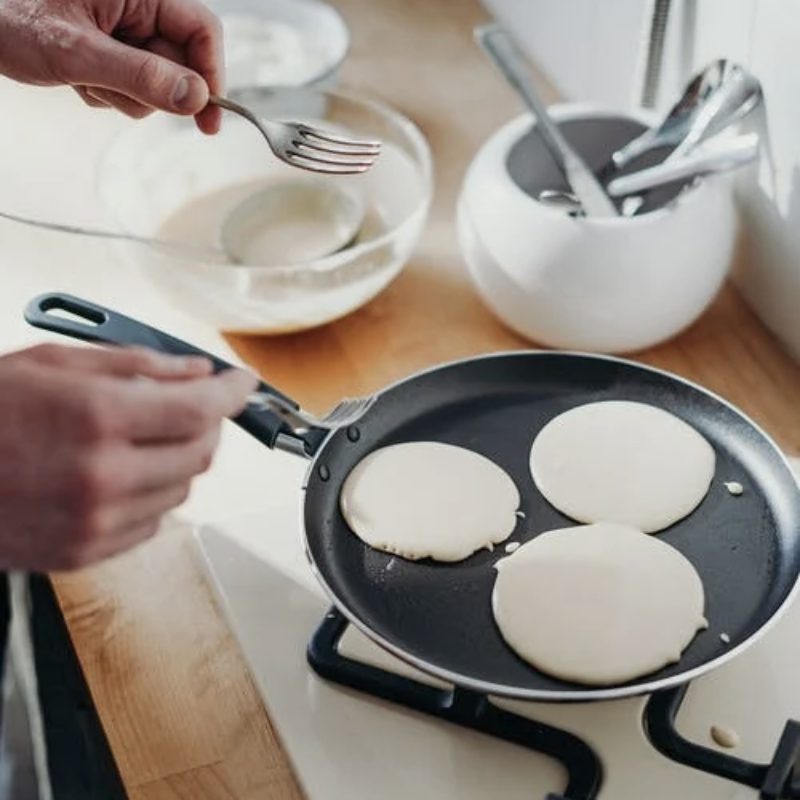
Non-stick cookware has made our lives super-easy, especially when it comes to cleaning after cooking. But the question is, are they really safe? Here’s a quick look at this – The non-stick cookware we use has a polytetrafluoroethylene (PTFE) coating or, in simpler words, a Teflon (clear plastic) coating.
While this coating is safe when used correctly, the problem arises when you heat these utensils at high temperatures. The PTFE/ Teflon coating starts to disintegrate when these items are overheated and release toxic chemicals into the air. Most worries are regarding PFOA, a by-product when Teflon breaks down, which is especially not good for development in kids.
While PFOA was phased out in the U.S some time back, the current alternatives are also suspected to have similar toxins. Even if you don’t overheat the non-stick cookware, the non-stick coating is bound to break down over time (2 to 2.5 years). So, it’s best to skip non-stick cookware altogether.
Non-toxic alternatives
- The Green Pan is a great ceramic non-stick cookware option that is safe to use.
- Now, there are also options available with silicone non-stick coating. You can look for these non-toxic cookware brands when out shopping next.
- You can also opt for a cast iron skillet, which is naturally non-stick and non-toxic. Plus, it adds iron to your food as well.
3. Canned food
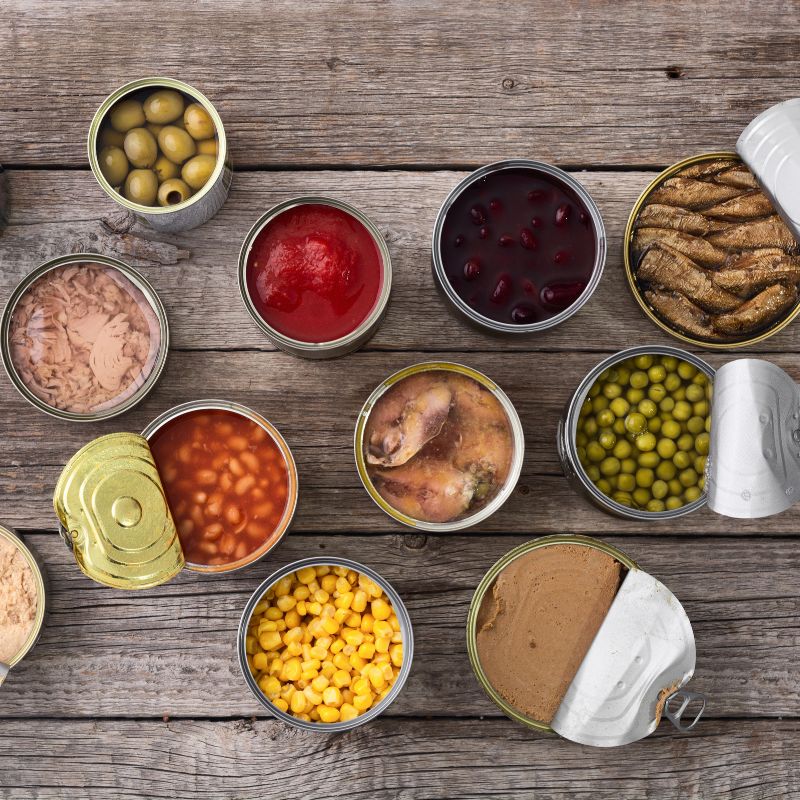
You must be wondering, what could be wrong with canned food? Well, the problem is not the food but the plastic coating on the cans to make the packaging leak-proof. Most canned food packaging has BPA, which makes it no different from plastic containers.
Some brands, like the ones selling children’s food, claim to be BPA-free; but parents should really do a thorough check before buying these canned products.
Non-toxic alternatives
- Of course, the best alternative is to go with fresh foods. They are not only non-toxic but also less processed. Hence, they provide more nutritional value.
- The next option is to go for frozen foods. However, they too come in plastic packaging, so make sure not to heat them along with the packaging.
- While it is pretty difficult to find BPA-free canned food options, you can still look for brands like Eden Foods and Earth’s Best Organics in nearby stores.
4. Cleaning solutions
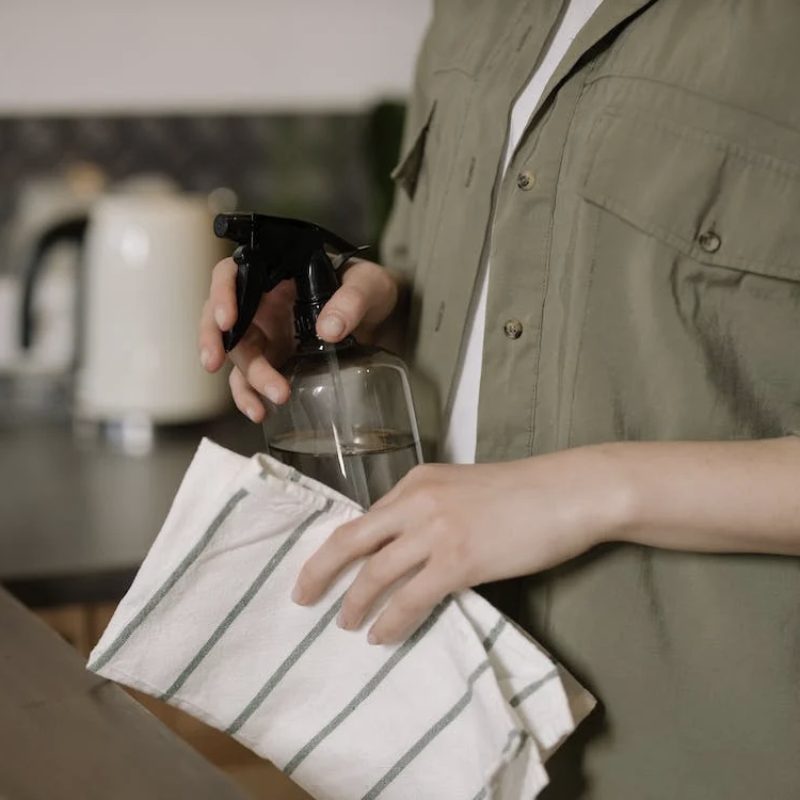
This is no secret that most cleaning products contain hazardous chemicals. According to the EPA, these are known to be a potential source of causing various health problems, including skin and mucus membrane irritation, shortness of breath, respiratory problems, and even cancer.
Let’s have a look at some common household cleaning products you use on a day-to-day basis and what’s wrong with them.
- Oven and drain cleaners or multipurpose cleaners
These cleaners contain synthetic chemicals like ammonia, perchloroethylene (PERC), sodium hydroxide, and sodium dioxide. When these products are inhaled or come in contact with your eyes or skin, they can cause sore throat and irritation.
It is best to skip them and use non-toxic alternatives. If that’s not an option, then make sure to be in a well-ventilated area. Wear gloves and a mask to cover your hands, nose, and mouth while cleaning.

- Bleach and ammonia
Both these items are great disinfectants and go-to cleaning solutions for many households. Despite the good cleaning properties, both these cleaning ingredients are highly toxic and can cause lung irritation, blindness, and even death.
According to the Occupational Safety and Health Administration (OSHA), another big risk is when you end up mixing these two chemicals; this mixture releases chlorine which can actually be lethal. - Other conventional cleaning products like dishwashing liquids, floor cleaners, etc.
According to the EWG, these common consumer products can have ingredients laced with the carcinogenic impurity 1,4-dioxane. These products might also contain preservatives that release small amounts of cancer-causing formaldehyde into the air.
The worst part, however, is that these highly toxic household products have no information on the packaging about the toxic ingredients or their possible side effects. This makes identifying possible non-toxic alternatives even more difficult.

Non-toxic alternatives
- It is best to use simple household ingredients. For example, a simple mixture of white vinegar, baking soda, and water in a 1:1:1 ratio can make a great all-purpose cleaner. Here are some non-toxic DIY recipes to make cleaning products at home.
- If you are not looking for DIYs, then you can always switch to eco-friendly cleaning products like Groves Co and Ecos for your cleaning solutions. Here’s a list of other eco-friendly cleaning products you can buy.
Toxic items you should switch today for a healthier bedroom
There’s no room for toxins in your bedroom, let alone in your home. Unfortunately, there are a few sneaky toxic substances that you are probably unaware of. Let’s have a look at such items and find greener ways to replace them.
5. Scented candles
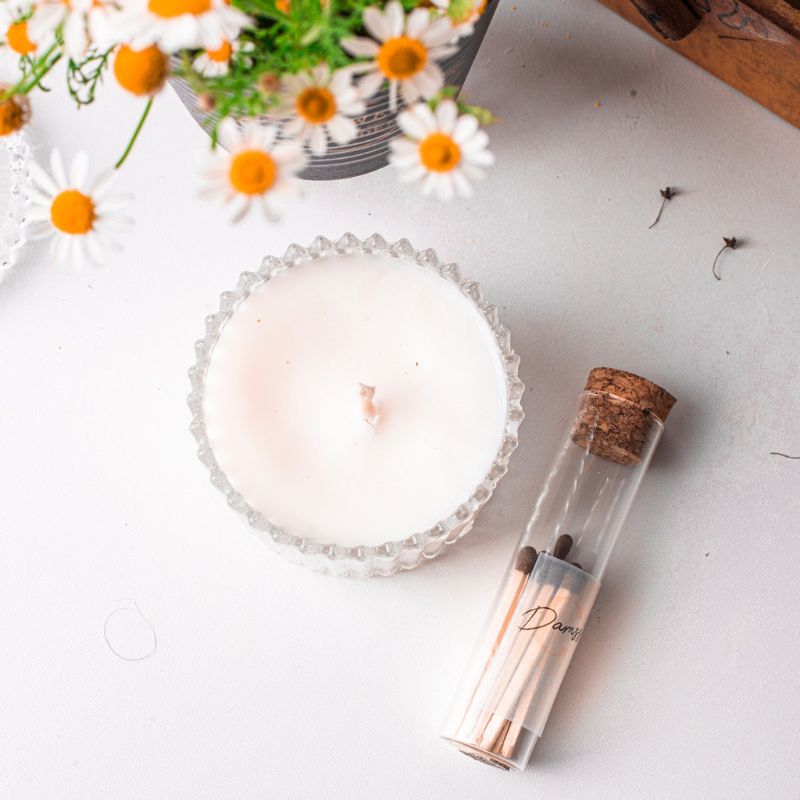
Candles are a great way to add some ambiance to your bedroom. However, scented candles are one of the most dangerous things you can use in your bedroom. They are among the most common indoor air pollutants you may be buying.
Most candles have paraffin wax and fragrances with synthetic dyes, which have been linked to asthma, allergic reactions, and other respiratory problems. When paraffin burns, it releases volatile organic compounds (VOCs) into the air, including some carcinogens.
In addition, the manufacturers use a lead-core wick to make it stand upright in the soft wax. According to the Consumer Product Safety Commission (CPSC), when you burn a candle with a lead-core wick, it releases lead which exceeds the EPA pollution standards set by five times. This is especially hazardous for your children.
Non-toxic alternatives
To make sure your scented candles are non-toxic, make sure to check for these 3 things –
- Plant-based wax (soy wax) or natural wax (beeswax) instead of paraffin wax.
- Essential oils for fragrance instead of synthetic chemicals.
- Use candles with a lead-free wick.
Itemerie and Nomad Noé are amongst the best places to buy non-toxic candles for your bedroom.
6. Bath and beauty products
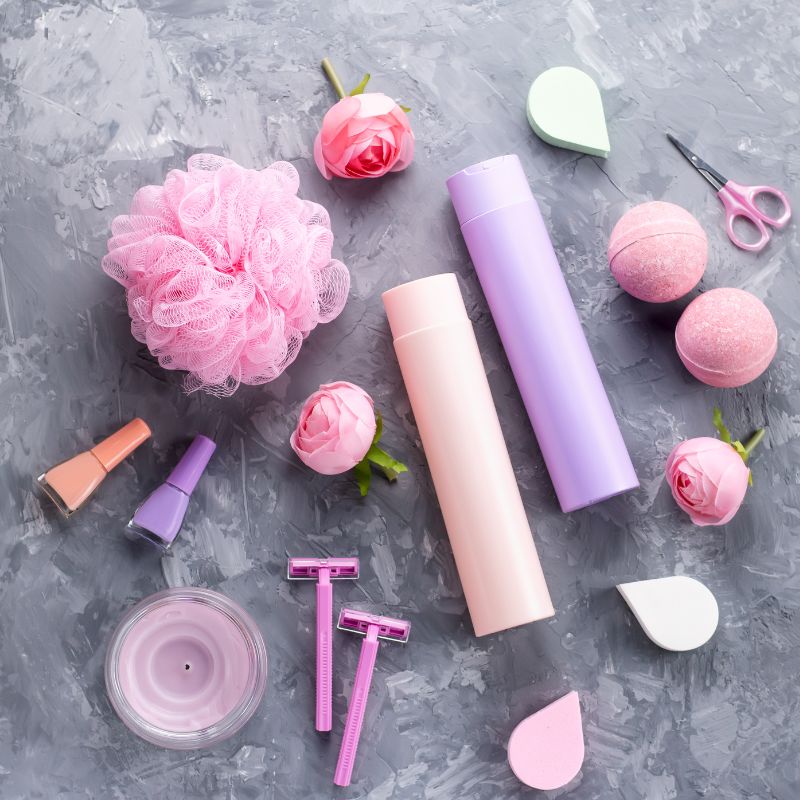
This is probably the most shocking revelation for most of you. If you look closely, everything from your toothpaste, shampoo, and moisturizer to your lipstick, foundation, and sunscreen might have harmful substances in them.
Some of the most common ingredients to avoid when buying beauty products include – Phthalates, parabens, petroleum jelly (well, we are just as shocked as you!), formaldehyde, and synthetic fragrances. These toxic ingredients are endocrine disruptors, which can cause allergic reactions and even cancer in some cases. They are definitely not good for you.
Such beauty products might claim to give you a brighter complexion or total protection from various pollutants. But in reality, they do more harm than good.
Non-toxic alternatives
The best way to have a cleaner bath and beauty regime is to opt for natural and safer beauty brands.
- These brands are not just good for you but also for the planet. They use ingredients that are natural, sourced ethically, and free of any harmful chemicals.
- These brands are certified by authorities like Ecocert, USDA, etc., that make sure everything that reaches you is safe and good for you.
7. Mattresses
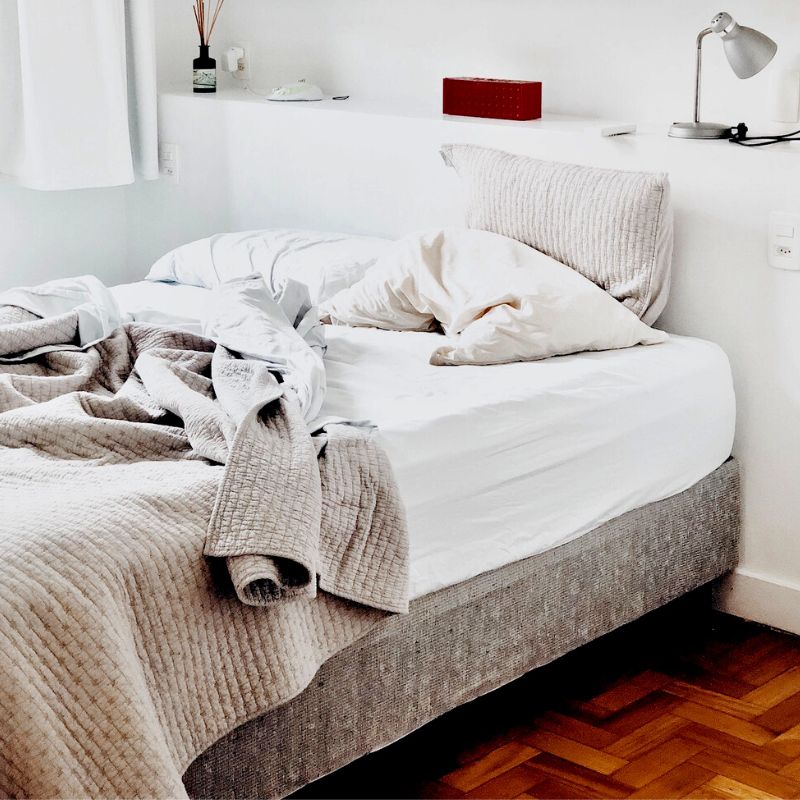
You probably spend almost a third of your life resting in your comfortable bed. But the relaxing memory foam mattress is actually releasing small amounts of volatile organic compounds or VOCs while you sleep. These amounts might do less harm to you; they can be more harmful to children who spend more time in bed.
VOCs like benzene and formaldehyde are emitted by flame-retardants in the polyurethane foam of your mattress to prevent fires. Similarly, the adhesives used to glue the mattress together have harmful chemicals, that can also cause cancer. These chemical compounds have many adverse health effects and can trigger allergic reactions like shortness of breath, and skin, throat, or eye irritation.
It is quite understandable that a mattress is a huge investment. While you cannot switch one overnight, the least you can do is to have a well-ventilated area. Also, start with smaller changes by switching the pillows and top covers. There are non-toxic options available, but unfortunately, they can be quite expensive.
Non-toxic alternatives
In case you are looking to switch to a non-toxic mattress, here are a few things to keep in mind.
- You can switch to natural materials like cotton, wool, coconut husk, etc. Look for certifications like Made Safe, GOTS, and Standard 100 by OEKO-TEX.
- Make sure the whole mattress is certified and not just certain components.
- In addition, opt for mattresses that are sewn together instead of glued. This will help you avoid exposure to harmful adhesives.
8. Air fresheners
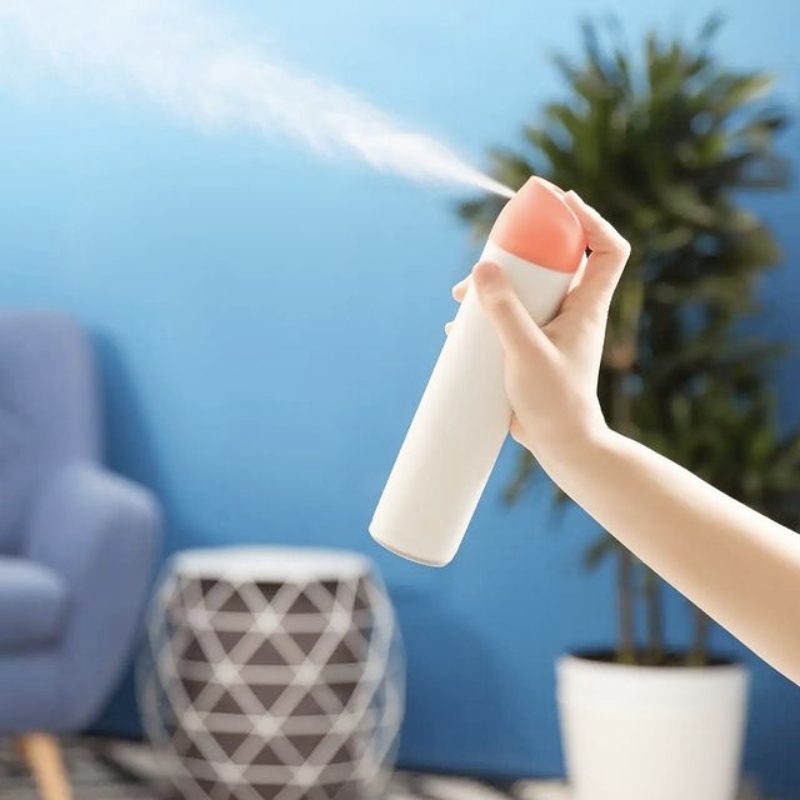
Air fresheners are a great way to make your home smell fresh, but they can potentially cause health effects that are negative, such as allergic reactions. Unfortunately, the manufacturers do not mention these toxic ingredients clearly on these consumer products, increasing your chances of greenwashing.
Greenwashing is a marketing tactic where brands make false sustainability claims about their products and services to convince consumers to purchase them. In reality, the product or service might not be as ethical or green as it sounds. To know more, read – 8 Ways To Avoid Getting Greenwashed.
Most air fresheners have synthetic fragrances, including chemicals such as phthalates and formaldehyde. Many people are sensitive to these chemicals, which can cause headaches, nausea, shortness of breath, and dizziness. This is worse when one is exposed to high amounts of chemicals or when the area is not well-ventilated.
Another common toxic chemical found in air fresheners is ethanol. Ethanol is a volatile organic compound (VOC) that has been linked to negative health impacts, including hormone disruption, increased risk of cancer, birth defects, and even infertility. In fact, the Environmental Protection Agency (EPA) has listed ethanol as a possible carcinogen too.
Non-toxic alternatives
You can use the following natural alternatives to make your home smell fresh instead:
- Use an essential oil diffuser.
- Place some freshly ground coffee or baked coffee beans in the room.
- Make your own potpourri with some dried flowers, essential oils, and fragrant herbs.
Other toxic things in your home to replace right away
Here are a few other toxic items used outside your kitchen and bedroom that often go unnoticed, when it comes to toxic things in your home.
9. Fabric softeners

Fabric softeners are a great way to soften your clothes, sheets, and towels. They can, however, be toxic to your skin and respiratory system. If you read the label carefully, you will find ingredients ending with ‘monium chloride,’ ‘biodegradable fabric softening agent’ or ‘cationic surfactant.’
All these terms refer to a single ingredient called quaternary ammonium compounds, or quats which are responsible for softening your washed clothes. These compounds are not good for your respiratory and reproductive system.
There are two other worrisome preservatives called methylisothiazolinone and glutaral. Both these chemicals can cause skin allergies, trigger asthma, and may contain impurities that cause cancer. Fabric softeners also have artificial fragrances, which again have phthalates in them that are harmful to your health.
Non-toxic alternatives
- Try wool dryer balls instead of fabric softeners. They naturally soften your clothes. In addition, they also help you save energy. By moving clothes around in the machine during the drying cycle, they reduce the drying time.
- You can also add about half a cup of distilled white vinegar to your clothes during the drying cycle. If you are worried about the smell of vinegar, don’t be; it doesn’t linger.
10. Shower curtains
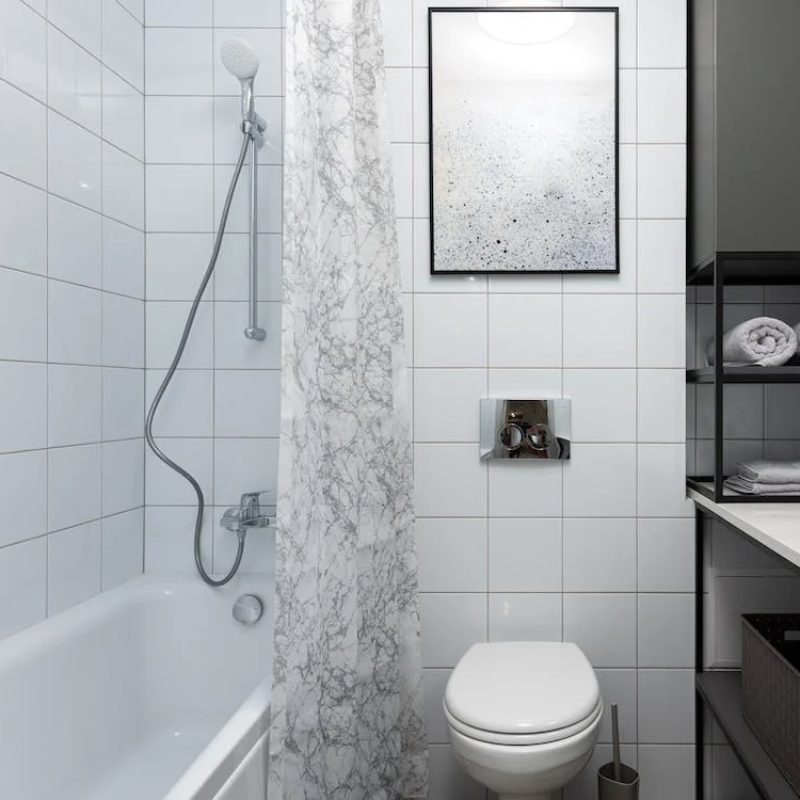
Shower curtains are usually made using plastics which are not really a great idea for you or the planet (since we know how big the plastic problem already is!) But that’s not it; sometimes, manufacturers add phthalates to soften these plastic sheets.
It’s surprising how often phthalates are used in our common household items. Even after knowing they have adverse effects, especially on children’s health.
Non-toxic alternatives
- The best non-toxic alternative is to use fabric (like organic hemp) shower curtains that are easily washable and reusable.
11. Bug sprays and mothballs
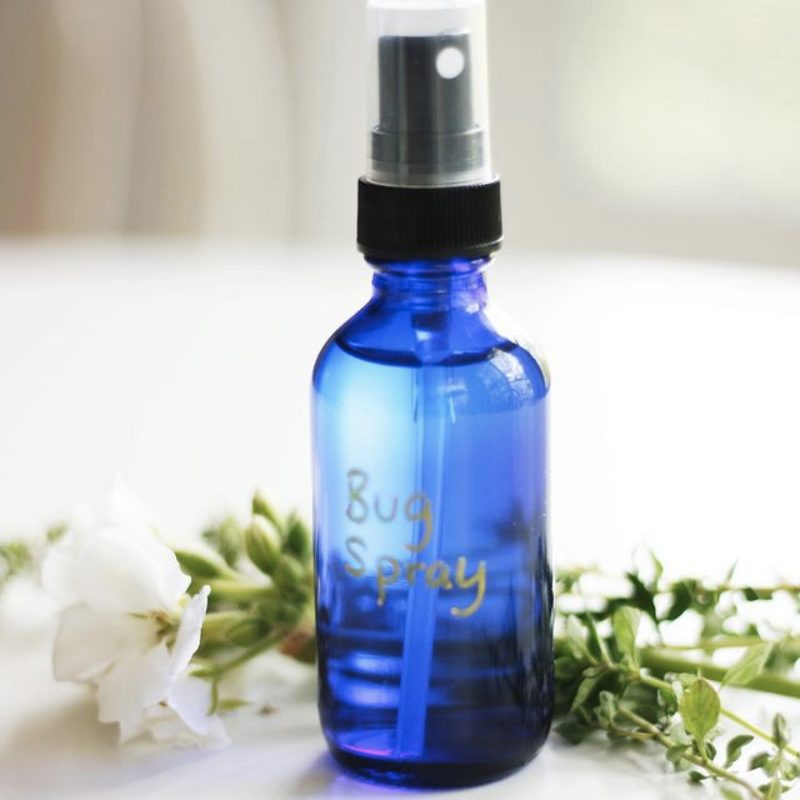
Bug sprays should be strictly avoided inside the home; if possible, outdoors as well. These household items contain pesticides that can be harmful to your kids. In some cases, they have even been linked to neurological damage in kids.
Mothballs are another toxic item that we often use to repel insects and rodents from our clothes in storage. As per the National Pesticide Information Center, these items have 100% active ingredients, including naphthalene or paradichlorobenzene.
These compounds, over time, turn into toxic vapors with a distinct smell that get inhaled. The most common problems associated with these compounds include dizziness, headaches, or skin and eye irritation. In case of prolonged exposure to these vapors, it may also result in liver damage and cataract formation.
Non-toxic alternatives
- You can use citronella in a diffuser as a non-toxic bug repellent.
- Another alternative is to make your own bug spray by using 1 oz witch hazel, distilled water, and 4-5 drops each of citronella, peppermint, lavender, and lemongrass.
- As a natural and non-toxic alternative to mothballs, you can hang some cloves wrapped in tissue paper inside your wardrobe.
12. Paint
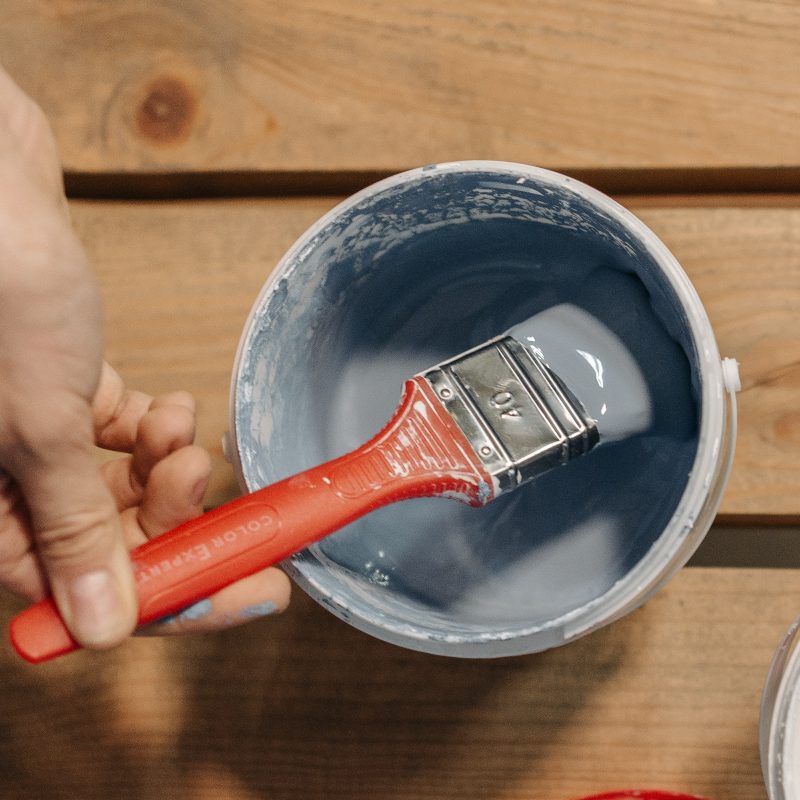
Paints are one of the most toxic things in your home. It is the reason you should be careful when choosing a new paint. This is because the chemicals used to keep the paint in a liquid state start to evaporate. These fumes contain VOCs, which can be harmful to you, your children, and your pets, too.
Depending on the base of the paints, the level of chemicals can differ. For example, oil-based paints have higher VOC emissions than water-based paints. It is important to carefully read the ingredients while re-doing your space. You should avoid lead-based paint altogether.
It is advised to follow the instructions on the products, to minimize health risks. Make sure the painting space is well-ventilated and take regular breaks to get fresh air. Irrespective of what the product says, this will be a precaution to save you from prolonged exposure to these compounds.
Non-toxic alternatives
- Opt for non-toxic or no-VOC paint options available in the market, such as Ecos Paints and Green Planet Paints.
- When looking for alternatives, make sure to check that not just the paint base but that the coloring is also VOC-free.
- In addition, you can also check for Greenguard Certification, which ensures that the product is tested for over 1000 chemicals and VOC emissions.
Final takeaway
Are you, too, surprised to find out how many everyday toxic things are lurking around in your home? In the end, it is your home, and you deserve to live in a clean and healthy environment.
Thankfully, most of the toxic exposure caused by these day-to-day home products is preventable through simple swaps. Now that you know, going forward, consciously choose the best toxin-free products and safe chemicals for your home!
And hey, we understand it can be difficult to recognize the right products without being greenwashed. So, here’s a guide on how to correctly identify whether a brand is truly sustainable or not, to choose what’s good for you, your family, and the planet!
Frequently Asked Questions
1. What are the top 5 toxic chemicals?
The top 5 toxic chemicals that can be found in your home include:
1. Bisphenol-A or BPA – Usually found in plastic products.
2. Perchlorate – Found in bleach.
3. Tetrachloroethylene (perchloroethylene) or Perc – Found in carpet cleaners, in your dry-cleaning, and spot removers.
4. 2-Butoxyethanol – Found in cleaning supplies, including multi-purpose cleaners.
5. Formaldehyde – Mostly found in cleaning and beauty products, baby wipes, and glues/adhesives.
2. What everyday things are toxic?
Here’s a list of 12 everyday things that are toxic –
1. Plastic items
2. Non-stick cookware
3. Canned food
4. Cleaning products
5. Scented candles and perfumes
6. Cosmetics and toiletries
7. Mattresses
8. Air fresheners
9. Fabric softeners
10. Shower curtains
11. Insect repellents
12. Paint
3. What are the most common toxins for which homes are tested?
According to Earth911, the 4 most common toxins for which homes are tested are:
1. Radon
2. Lead paint
3. Water
4. Indoor air
4. What are the top 10 pollutants?
Here’s a list of the top 10 pollutants –
1. Carbon Monoxide
2. Lead
3. Nitrogen Oxides
4. Ozone
5. Particulate Matter
6. Sulphur Dioxide
7. Acrolein
8. Asbestos
9. Benzene
10. Carbon Disulphide
5. What elements are toxic to humans?
According to the Occupational Safety and Health Administration (OSHA), here are the top 6 elements that are toxic to humans –
1. Arsenic – usually found in or near hazardous waste sites.
2. Beryllium – mostly found in mining, extraction, and processing of alloy metals containing this compound.
3. Cadmium – found in batteries and industrial workplaces.
4. Hexavalent Chromium, such as calcium chromate, chromium trioxide, lead chromate, strontium chromate, and zinc chromate – ususally found in industrial sites.
5. Lead – found in various household items like paint, candle wicks, and industries like construction work, firing ranges, radiator repair shops, and most smelter operations.
6. Mercury – mostly found when mining and refining gold and silver ore.









